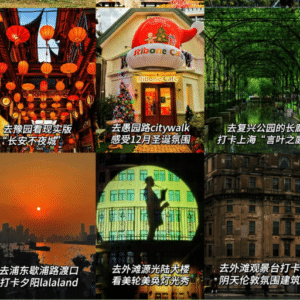Shanghai city is a concrete jungle of an international city with an enthralling history associated with it. This city is a mix of breathtakingly beautiful futuristic locations alongside highlighting the historical architecture that resides within. This guide contains 20 tourist attractions in Shanghai city and showcases what Shanghai offers. The city provides a plethora of options to choose from. Be it a history lover wanting to explore grand old streets, a culinary enthusiast looking to taste gourmet dishes, or an adventurist trying to get a glimpse of modern Shanghai, this article puts forth many. This article highlights attractions, depicting why Shanghai remains such an ever-evolving city and will engrave memories forever.
What are the top historical attractions in Shanghai?
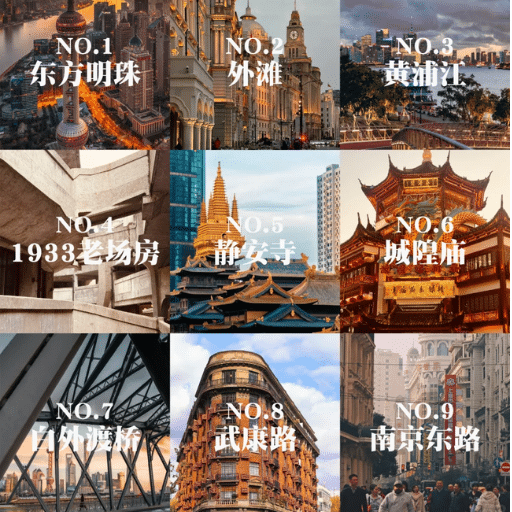
The Bund
The Bund lies on Shanghai’s waterfront and is famous for its colonial architecture. It has beautiful hotels and offers a good view of the city. The Bund is located along the famous Huangpu River.
Yu garden
The Yu Garden is a delightful fusion of pavilions, classical Ming Dynasty rockeries, and Chinese gardens. If you want tranquility and the authentic feel of old Shanghai, this is the place to go.
Jade buddha temple
The Jade Buddha Temple has the key features of a Buddhist temple while being a cultural landmark as well. Its congregation is very vast, and it contains beautiful, interpreted architecture. It is a hot spot for tourists and historic explorers since it includes two beautiful jade statues from Myanmar.
Longhua temple and pagoda
Moreover, Longhua Temple is the oldest and most significant temple in Shanghai. It was built during the three kingdoms and has astounding halls and a seven-story pagoda depicting the Longhua statue.
Former french concession
The former French concession in Shanghai has been said to blend European and traditional Chinese architecture. It has historical villas along its streets and is surrounded by cafes, making it an ideal place to experience Shanghai’s colonial legacy.
Exploring the iconic Bund: A walk through Shanghai’s colonial past
Strolling down the Bund brings history alive, for exactly how the city geared itself through innovations and revolutions. Taking a peek at this particular region introduces the memory of how Shanghai appeared composed during the colonial era, especially with its eye-catching skyline incorporating architecture that dates back to the 20th century. Not only were the elaborate neoclassical structures serving as the home to various banks and trading corporations, but they were also an embodiment of the evolution in Shanghai as it set foot into the international trading landscape. The Bund has succeeded in holding on to what the city’s history looks like. Even with its golden years gone, it still possesses spectacular views of the Huangpu River and the partially hidden skyscrapers of Pudong in the backdrop.
Uncovering ancient treasures at the Shanghai Museum
Situated at People’s Square, the Shanghai Museum is an architectural gem, as well as a gallery that showcases art and artifacts of ancient China. The signature circular profile sitting on a square footprint of the building’s design is indicative of the ancient Chinese ideology of “Heaven is round, and Earth is square,” and this specific Museum is due to its vision widely known; NWM scaffolding contains over 120,000items that aggregate more than 5000 years of history and culture in one impartial. Some collections that can be seen on display include bronze ware, ceramics, calligraphy, paintings, jade, furniture, and numismatics, to name a few.
The museum has several galleries, including ancient bronze vessels and relics from the Shang and Zhou dynasties, Tang tri-colored glazed pottery, and porcelain from the Song dynasty within its ceramic gallery. In addition, the Calligraphy and Painting Galleries encompass various pieces from different dynasties that contributed to the advancement of Chinese art.
The Shanghai Museum is open from 9 AM to 5 PM, with the last guest allowed in at 4 PM. To enhance visitors’ experiences, the museum provides audio guides in different languages and interactive displays. However, some exhibitions may cost, while others are free of charge. Thus, the museum is appropriate for further exploration and can be enjoyed by everyone.
Discovering the charm of Yu Garden: A Ming Dynasty masterpiece
My favorite of classical Chinese gardens and where the best Ming dynasty architecture can be found is the Yu Garden, located right in the heart of Shanghai, China. It is about 5 acres in size, more or less the equivalent of several remarkably exquisite peacock-style pavilions, tranquil pools, and beautifully designed meandering corridors that bring about calming feelings. One of the most essential things to see here, apart from the Grand Rockery, composed of yellow stones and over 12 meters high, is the Masterful Jade Rock, which has over four centuries of history. In its planning, the garden reveals technical wit by designing it to have an extensive effect in a series of enclosed sections. Working hours are every day from 8:30 AM till 5:00 PM, when people are free to relax without noise and marvel at the masterpieces of decorative and applied art for centuries.
Which modern marvels should I visit in Shanghai?
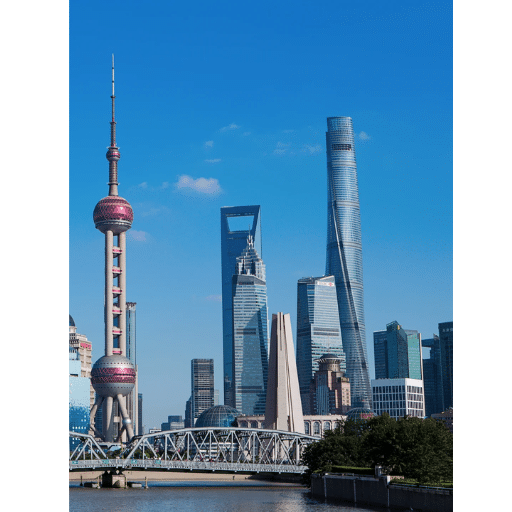
The magnificent skyline of China’s largest city can be described as persuasively stimulating. A comprehensive visit would include the rising architecture of the Shanghai Pearl Tower alongside the World Financial Center, which gives sweeping views of the metropolis. The second wonder of the world, Shanghai Tower, is a relevantly recent piece that also deserves a glance. There’s also the Bund, which possesses an elegant cocktail of history and modern engineering. At the same time, in the West Bund area, you’d be amid art museums and advanced city infrastructural designs. These sites exemplify China as a nation firmly entrenched at the forefront of architectural brilliance.
Ascending the Shanghai Tower: The world’s second-tallest building
The first-hand observation visits to the Shanghai Tower and its features captivated me. The tower is 632 meters high and has the highest observation deck in the world, providing the city’s best views. The elevator quickly takes you to the upper deck, adding to the thrilling experience. Also, the twisting nature of the tower is a good feature as it makes the structure more efficient while reducing wind loads. Moreover, the Shanghai Tower has multiple functions, including office space, retail areas, and a high-end hotel. Overall, it is a great experience to go to the highest building in Shanghai to enjoy the views and the experience.
Admiring the unique architecture of the Oriental Pearl TV Tower
Pudong is home to the Oriental Pearl TV Tower, one of the most famous monuments in Shanghai. It combines a modernistic style with cultural significance. It was completed in 1994, and for a short time, it was the highest construction in China, standing at 468 meters or 1535 feet, until it was outshone in 2007. Its design is rooted in the concept of “twin dragons playing with pearls”; 11 spheres of different sizes were built, two of which serve as observation decks.
This structure is positioned upon three big poles and consists of five focal observation spaces, with the Space Module reaching an altitude of 351 meters (1,152 feet). In addition, there is a revolving restaurant, a conference hall, a museum, and exhibition facilities, proving the structure is multifunctional and caters to educational and tourism needs. The giant spheres are accommodated by a unique space frame system, in which composite steel and reinforced concrete protect against the occasional earthquakes and winds the region experiences.
Inscribed by its beauty, the Oriental Pearl TV Tower is a remarkable wonder of design, merging the functions of broadcasting and telecom with extraordinary visual beauty. Its impressive dynamic LED lighting makes it more culturally and architecturally significant. People love the views of the Shanghai skyline and the tower’s historical context, so it is relevant for visitors and an exploration for locals.
Experiencing the futuristic Shanghai World Financial Center
The Shanghai World Financial Center was quite an experience with its 492-meter height, striking modern architectural design, and trapezoidal opening cut on its roof. However, what amazed me most was the 100th-floor Sky Walk, with its glass floor, which lent an uncanny aerial view of the city’s busy streets. To me, it certainly felt like walking on air.
The financial center has 101 floors above ground and 3 below ground. It provides high-speed elevators that reach a maximum speed of 10 meters per second, making the visit highly efficient. The 474-meter-high observation deck gives a panoramic view of Shanghai and the additional three floors. As an Esplanade design structural engineer, I know the WFC is built to resist natural disasters and ensure safety.
What are the best cultural experiences in Shanghai?
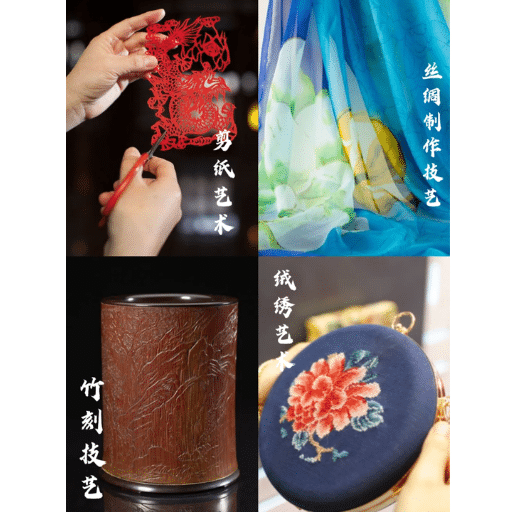
Shanghai is a city that embodies both history and modernity. The Bund is a historical site that allows visitors to see colonial buildings while standing in front of modern-day skyscrapers. The Yuyuan Garden features classical exhibition buildings that go hand in hand with serene gardens. In contrast, the Shanghai Museum holds age-old relics, engravings, and pottery that display China’s vast past. On the other hand, the Shanghai Grand Theatre exhibits outstanding contemporary performances, while the M50 Art District displays modern art and vivid galleries. All these locations seem to complement one another and showcase the multi-faceted culture of Shanghai.
Strolling through the atmospheric French Concession
The French Concession is reminiscent of Shanghai’s colonial and contemporary eras, with wide boulevards filled with trees, European-style houses, and lively cafes. It is both an artistic and historical site with numerous landmarks and restaurants, including Tianzifang, Fuxing Park, where the local populace gathers for Tai-chi and dancing, and the historical homes of Sun Yat-sen and Zhou Enlai. While basking in the lively urban culture of the city, it is also the perfect spot to uncover Shanghai’s history.
Visiting the serene Jade Buddha Temple
Within Shanghai’s lively Jing’an District lies the Jade Buddha Temple, one of the City’s most famous Buddhist sites. Built in 1882, the temple is renowned for housing two jade Buddha statues brought back from Burma during the Qing dynasty. The statues include the 1.95-meter tall seated Buddha encrusted with semi-precious stone and a smaller reclining Buddha, symbolizing spiritual enlightenment.
The temple houses exquisite halls, such as the Grand Hall and the Hall of the Heavenly King, decorated with wooden carvings and religious art. Such a temple remains active, serving devotees who light incense and where monks are engaged in daily prayers. However, for someone who seeks peace in the hustle and bustle of the busy city, The Jade Buddha Temple serves as a perfect solution; it has the calmness to nurture one’s spirituality while blending beautifully with the architecture of the building. The temple requires the visitors to dress suitably and generally opens between 8 am and 4:30 pm, charging around 20 to 50 RMB based on the exhibitions.
Enjoying a spectacular show at Shanghai Circus World
To view a performance at Shanghai Circus World is the same as experiencing lifetime memories. Its exquisite acts, which feature acrobatics, combine China’s ancient art with the contemporary approach to performing art. During my trip, I was enthralled to watch the “ERA—Intersection of Time” production, which featured extreme aerial feats, seamless routines, and impressive imagery effects. The hall is also equipped with new lighting and sound technology.
Technically speaking, the main arena has an approximate 1,639-seat capacity and sufficient dispersion for a good view. The stage has the best-advanced use of hydraulic systems to change the set dramatically, while the wide variety of performers is often high-tension safety rigging equipment. The shows are usually held in the evening around 7 pm, with tickets priced from 120 to 500 RMB depending on the seat type. I believe purchasing tickets for these popular performances ahead of time is the best strategy to avoid disappointment. Of all the shows I saw, this was truly an advertisement for the spectrum of talent and innovation at the Circus World!
Where can I find the best shopping and entertainment in Shanghai?
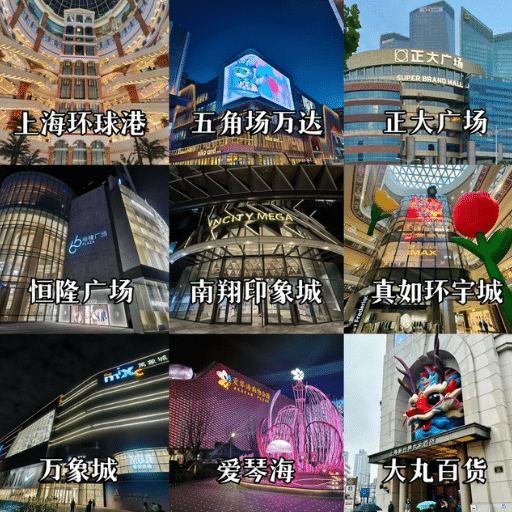
Shanghai has something for everyone, such as shopping, dining out, and entertainment. It features modern elegance while also retaining its traditional appeal. Start your incredibly high buying power shopping experience by visiting Nanjing Road, which is home to many shops and is known to be one of the most crowded streets in the world. If you would like a mix of homemade products and stunning food, then make sure to check out Tianzifang for artisanal cafes, shops, and galleries. For spectacular views of Shanghai’s skyline and vibrant nightlife, head to the Bund. If you want restaurants and bars that serve fantastic food while hosting live music, Visit Xintiandi for a more luxurious experience. Regardless of your preferences, Shanghai has got you covered.
Exploring the bustling Nanjing Road: Shanghai’s premier shopping street
Spanning over three miles, Nanjing Road is a sight to behold and is an integral part of Shaghai’s culture. Walking down this street, you will be greeted with Chinese antique shops, high-end luxury shops, and much more. If you want a relaxed experience, head to East Nanjing Road, where you can stroll around and check out various shops. The street performers and crowds only add to the exhilarating experience; you get to do much more than just shop; you genuinely immerse yourself in the culture. Nanjing Road has everything you need, whether you want to shop for luxury goods or make memories of tasting unique local food.
Experiencing the magic of Shanghai Disneyland
Shanghai Disneyland provides an outstanding entertainment business to its guests owing to the classical Disney story combined with the elements of Chinese culture. Spanning over an area of approximately 978 acres and built in 2016, Shanghai Disneyland is among the largest Disney resorts in the world. Offering its guests an innovative experience, the park’s centerpiece also features an interactive Walkthrough attraction, dining, and a Bibbidi Bobbidi Boutique, along with providing the most technically advanced architecture, such as The Enchanted Storybook Castle, which is known to be the highest fantasy world castle built standing at a whopping 197 feet.
The high-speed roller coaster TRON Lightcycle Power Run, with its new innovative light effects, and the groundbreaking ride Pirates of the Caribbean—Battle for the Sunken Treasure, which features a new magnetic ride technology, are also included in the theme park alongside a wide range of classic Disney rides, live shows like “Mickey’s Storybook Adventure,” and other events that are hosted to ensure the magic doesn’t fade away.
To serve Shanghai Disneyland Park attendees, all types of hotels settle within the Disneyland Resort Area of Disneytown, along with retail and dining districts, ticketing options, and other facilities. Disneytown hotels range from Pebble and Toy Story Hotel to Shanghai Disneyland Hotel, and general tickets cost between 437 Yuan and 769 Yuan on peak and off days.
Discovering hidden gems in the traditional Tianzifang area
Tianzifang impressed me with a charming combination of traditional Shikumen buildings and modern art. Each narrow alley featured many boutique shops, artisan workshops, and inviting cafés, each one different and fascinating. If you are an artist or a culture lover, Tianzifang is a great place to visit because fantastic handmade jewelry and modern artworks can be found there. Furthermore, it’s also famous for its nightlife and restaurants serving international dishes, including Chinese street delicacies or a French croissant. Even in such a furious swirl of creativity, the restored alleys and antique elements help me feel like I have been there for ages, so I appreciate this location. To enjoy a more quiet experience, make sure you visit during the week.
What are the must-try activities for tourists in Shanghai?

- Stroll along The Bund
Enjoy the unique combination of colonial-style architecture with the contemporary skyline in Pudong along the body.
- Explore Yu Garden
Look at this beautiful classic Chinese garden with stunning pavilions, koi ponds, and other traditional landscaping features.
- Visit Shanghai Tower
You can use the observation deck of one of the tallest buildings on earth to get breathtaking 360-degree city views.
- Shop at Nanjing Road
This bustling shopping area combines high-end shops, local shops, street vendors, and boutiques.
- Enjoy a Huangpu River Cruise
Take a sailing trip along the river, and you will most likely enjoy the skyline of Shanghai, beautifully lit at a pleasing night hour.
- Discover Tianzifang
Explore this neighborhood of artsy shops, narrow streets, galleries, and shops.
These activities define Shanghai in its traditional and modern facets whilst also being culturally intricate.
Taking a scenic Huangpu River cruise
The Huangpu River cruise stands out among some of the best activities I engaged in in Shanghai; the city’s skyline was stunning, with the Shanghai Tower and the Oriental Pearl Tower shining brightly during the night. Seeing these landmarks from the cruise was magical. The cruise was boarded on an organized terminal, and the inner atmosphere was peaceful, which is hard to describe when you are in a crowded city. Speaking of which, the duration of the cruise was again perfect. It lasted an hour, and the open air and indoor decks offered great comfort. Seeing the Bund and the Pudong side of the river feels like two different worlds, pulling in the Shanghai experience while reminding you of the rich history.
Riding the high-speed Shanghai Maglev train
The Shanghai Maglev train is a fusion of modern technology and engineering and is one of the things that travelers should try out when visiting the city. It is the world’s first commercially operational magnetic levitated train, What makes this train unique is its mind blowing speed of up to 431 km/h (268 mph). When the train reaches its peak speed, it can finish the 30.5 km (19-mile) route in an astonishing 7 to 8 minutes, which makes it one of the fastest and smoothest means of transport across the globe.
Unlike traditional trains, the Maglev moves above the tracks using electromagnetic forces, eliminating friction and producing a greener, quieter, sleeker train. It works daily from 6:45 am to 9:40 pm, becoming available every 15-20 minutes. One-way tickets cost 50 RMB, and round-trip tickets would cost 80 RMB. Tourists especially find it an enjoyable ride not just because it’s an easy airport transfer but because they get to experience the creativity and innovation that determines the future of travel.
Visiting the Shanghai Urban Planning Exhibition Center
The Shanghai Urban Planning Exhibition Center is a fascinating place where I learned about the city’s past, ongoing, and future architecture. It is also known as the Shanghai Urban City Exhibition Centre, and it is situated within People’s Square in a five-story building and features exquisite models, excellent multimedia, and interactive displays. A stunning city model highlights it: it covers over 600 square meters and depicts every structure in the central part of Shanghai. Other highlights include a theater that features 3D spectacles and contemporary displays that explain eco-friendly designs in the city. It cost 30 RMB to enter, and I thought the guided tours were very informative. It is a valuable place for those interested in city formulation or the rapid development of Shanghai over the past couple of decades.
Which day trips from Shanghai are worth considering?
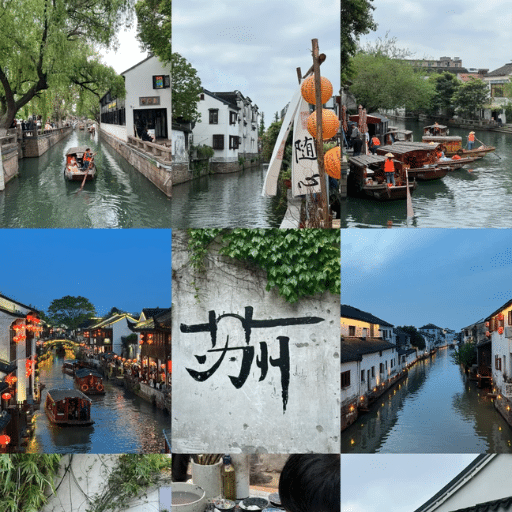
- Zhujiajiao Water Town
This ancient water town is just an hour from the bustling city and features canals, bridges, and intricately designed buildings. It is why Zhujiajiao is also known as the Venice of Shanghai.
- Suzhou
Suzhou is famous for its silk production and beautiful canals but is also deeply rooted in culture and history. Located just a 30-minute train ride from Shangai, Suzhou is also home to one of the most enormous classical Chinese gardens, alongside many other historical buildings.
- Hangzhou
Suppose you’re looking for a perfect tea-drinking spot or a cultural heritage site. In that case, Hangzhou is the place for you, not to mention the breathtaking scenery it offers, including the iconic West Lake, which will surely fulfill its promise of calming you down.
- Moganshan
Located two hours from Shanghai, Moganshan offers nature lovers a chance to step outside the urban jungles and venture into captivating hiking trails, bamboo forests, and breathtaking views.
- Nanjing
The Nanjing Massacre Memorial Hall, Confucius Temple area, and Sun Yat-sen Mausoleum are the city’s top attractions. Nanjing is only a train ride away from Shanghai. As such, it is more than just a symbol of history; it is also a tourist hot spot.
With these trips, you can ‘travel’ through history and nature to better understand China and its rich culture.
Exploring the picturesque water towns of Zhujiajiao or Wuzhen
The town of Zhujiajiao is located slightly to the west of Shanghai: a Blue sky and bright sunlight flood this town, which is often referred to as the ‘Venice of Shanghai’ which holds the features of a beautiful water town that is surrounded by ancient bridges wide alleys and canals Zhujiajiao is located around an hour away and can be used for a perfect day off and at Zhujiajiao there are numerous tourist attractions such as ancient buildings Kezhi garden alongside relaxing sites, for example, boat rides alongside taking walks beside the canal.
Similarly, Wuzhen is located around two and a half hours away. Unlike the other towns, it has beautiful architecture alongside a cultural heritage that is both preserved and well-maintained. Wuzhen is divided into East and West Crafts zones, allowing tourists to take part in silk weaving and a trip inside the scenic zones in boats while slackening under the lights of lanterns.
Visiting either Wuzhen or Zhujiajiao allows you to experience China’s past and rich history. Both towns are perfect examples of traditional cities because they’re peaceful, beautiful, and have a rich history. However, it would depend on user preference which town they prefer because both allow tourists to experience the beauty of ancient and historical China.
Visiting the classical gardens of Suzhou
The Classical Gardens of Suzhou possess outstanding artistic, historical, and architectural value. They were recognized as a site by the UNESCO World Heritage. They are also quite distinguished and revered around the world. The architecture of these beautiful gardens dates back to the Song Dynasty and has been improved and enhanced over the years. They are a testament to China’s rich history while blending natural and artificial elements. Some of the main features of these gardens include diverse water bodies, stunning pavilions, startling rock structures, and stimulating plants.
The Zhuo Zheng Yuan, or the Humble Administrator’s Garden, is also noteworthy. It is considered one of the world’s largest and most visited gardens, extending over 52000 square meters. The main features, which trace water bodies, bamboo, and breathtaking bridges together, appear simple yet luxurious simultaneously. In addition, Liu Yuan, or The Lingering Garden, is also recognized as more expansive, with intricately and expertly designed rockeries and halls that fit seamlessly inside each other.
As the name suggests, Wangsih Yuan was made first in history and is relatively more minor than the others. However, it is remarkably well crafted and exhibits outstanding design and layout, earning it the ‘Perfect epitome.’ The Japanese and Chinese designs for Maud’s gardens emphasized size and scale, strict principles such as feng shui and symmetry, and the elaborate integration of Maud’s beautiful buildings with nature.
Guests should take enough time to assess and enjoy the stunning beauty of these calm settings. Each garden shows how traditional Chinese arts and philosophy are practiced, making them a ‘must-see’ for anyone visiting Suzhou.
Taking a trip to the tea fields of Hangzhou
A Memorable family-oriented excursion that I would love to recommend is hanging out in the tea fields of Hangzhou. It is an enjoyment of the aesthetics of nature and history, along with green tea. It offers incredible views of green Terraced fields, which Longjing (Dragon Well) tea is famous for. While on tour, I encountered specific strategies such as handpicking tea leaves and even the authentic Chinese way of fire-roasting tea leaves that have been mastered over time.
Here are some key details I noted for visiting the Longjing tea fields effectively:
- Best Time to Visit: March to May is the best time for tea lovers. The Tea is plentiful and ripe for harvesting.
- Elevation and Climate: An altitude of 300 to 600 meters plus a humid subtropical environment ensures a conducive growing climate with an average temperature of 15-20°C.
- Cultural Observation: Local tea farmers provide tours and tastings to better understand Longjing. Tea is an indispensable part of Chinese history, and this tea is an essential part of that.
Going to Hangzhou’s tea fields is an experience that allows you to taste some excellent tea and soak in the region’s calmness and culture.
What’s the best time to visit Shanghai’s attractions?

Spring (March to May) and Autumn (September to November) are the ideal seasons to travel to Shanghai. The temperature during these times is usually perfect for sightseeing and outdoor activities, averaging around 15-22°C (around 59-72°F). Thus, tourists can explore the Bund, visit Yu Garden, or see the view from the Shanghai Tower. The extreme heat and humidity of summer and winter’s colder, damp weather are also avoided in these seasons.
Understanding Shanghai’s seasonal weather patterns
According to my personal experiences, seasons in Shanghai tend to have astounding differences in weather. For instance, spring (March-May) is a superb time for everyone to travel because of the warm temperatures and beautiful flowers. Autumn (September to November) is also perfect for city exploration due to its warm and sunny weather, with both of them having ideal conditions in which to travel. Summers (June-August) are hot and sticky with rains, and winters (December-February) are cold and damp. The best times to visit would be Spring or Autumn, for ideal conditions.
Planning your visit around major Chinese holidays and festivals
If you are planning a trip to Shanghai, you must make note of the major holidays and festivals in China, as they may heavily influence the travel experience. The key holidays include the Chinese New Year (Spring Festival), which usually takes place between late January and mid-February, Golden Week, which is the first week of October, and the Dragon Boat Festival, which is celebrated during the 5th day of the 5th month in the Chinese calendar which is roughly between the end of May to early June. The city is usually active during these times, but transportation and accommodation may be challenging and expensive.
Chinese New Year is one of the most anticipated and celebrated holidays. The tradition and culture during the year are remarkable, and most families come together on this holiday. Most businesses go on holiday, and the transportation sector is heavily utilized due to the high volume of commuters. Around this time, the Golden Week takes place, which is all about traveling across the country. Similarly, the Shanghai Bund and Yu Garden also see a high volume of tourism. If you want to indulge in cultural activities and eat traditional mooncake, then Mid-Autumn Festival is ideal for you, it takes place on x day of the 8th month of the Chinese calendar.
For a safe holiday with few tourists, plan to come during times that are not long holidays or festival days for better sightseeing. Instead, consider visiting in the fall or spring to avoid the heavy flowering dates and offer better large-area lighting options. By checking up on these factors before you plan, you can ensure that your trips can be scheduled according to your goals and avoid extra hassle.
Tips for avoiding crowds at popular tourist spots
When going to well-known hot spots, I habitually go on weekdays early in the morning. Anything other than that, I would quer to make an online reservation for entry, I scout around for time-slotted entries were available so that I have less stomaching of long queues. I mix with people’s use and location-based apps to check the overall crowd density at a specific destination. There are hardly ever as many people bothering you at these hours, also considering an alternative view around the other entrances lets me behave less rowdy while quieting the location from told perspectives. Apps also help keep me on my toes and allow me to stay malleable with my plan. Somewhere near the Golden Week works best for me when all locations are quiet.
References
Frequently Asked Questions (FAQ)
Q: What are the top things first-time visitors to Shanghai should do?
A: First-time visitors should explore some of Shanghai’s most iconic attractions, including the Bund along the Huangpu River, Yu Garden, Shanghai Tower for a bird’s eye view of Shanghai, and Shanghai Disneyland Park. These attractions offer a mix of old Shanghai charm and modern marvels, making them essential for any Shanghai tour.
Q: Is visiting Shanghai Disneyland Park during a trip to Shanghai worth it?
A: Absolutely! Shanghai Disney Resort is one of the top attractions in the city, especially for families and Disney fans. It offers a unique blend of classic Disney magic with Chinese cultural elements, making it a must-visit attraction in Shanghai for many tourists.
Q: What are some of the best parks in Shanghai to visit?
A: Shanghai boasts several beautiful parks worth visiting. Some of the best places to visit are People’s Square, Century Park, and Gongqing Forest Park. These parks offer a peaceful retreat from the bustling city and are great places to experience local life and culture during your stay in Shanghai.
Q: What are the top museums to visit in Shanghai?
A: Shanghai has some of the best museums in China. The Shanghai Science and Technology Museum, Shanghai Natural History Museum, and Shanghai History Museum are among the top attractions. These museums offer fascinating insights into science, nature, and the rich history of Shanghai and China.
Q: What unique places in Shanghai can you visit for a different experience?
A: For a unique experience, consider visiting the Shanghai Ocean Aquarium, one of the largest aquariums in the world, or explore the trendy Tianzifang area with its maze of alleyways filled with art galleries and boutique shops. These attractions offer a different perspective on Shanghai’s diverse offerings.
Q: What is the best area in Shanghai to visit for sightseeing?
A: For easy access to many top Shanghai attractions, consider staying in central Shanghai, particularly in the Huangpu or Jing’an districts. These areas are close to popular sites like the Bund, Nanjing Road, and People’s Square, making them ideal for sightseeing in Shanghai.
Q: Is it possible to see the top Shanghai attractions in a short trip?
A: While a longer stay allows for a more comprehensive experience, seeing many of Shanghai’s highlights in a short trip is possible. Focus on key attractions like the Bund, Yu Garden, Shanghai Tower, and perhaps one or two museums. A well-planned Shanghai tour can help you maximize your time and see the city’s best offerings.
Q: What are some must-visit attractions in Shanghai for history buffs?
A: History enthusiasts should visit Yu Garden to experience old Shanghai, the Shanghai History Museum for a comprehensive overview of the city’s past, and the Bund to see the historic buildings along the Huangpu River. These places offer fascinating insights into Shanghai’s rich cultural heritage and transformation into a modern metropolis.
Q: What are the best things for science and technology lovers to do in Shanghai?
A: Science and technology enthusiasts should not miss the Shanghai Science and Technology Museum, one of the largest science museums in Asia. Additionally, visiting the Shanghai Tower for its advanced engineering and the Shanghai Maglev Train for its cutting-edge transportation technology are great options. These attractions showcase Shanghai’s commitment to innovation and technological advancement.
Q: What are some of the top things a family with children can do in Shanghai?
A: Families with children will enjoy visiting Shanghai Disneyland Park, the Shanghai Ocean Aquarium, and the Shanghai Natural History Museum. These attractions offer interactive and engaging experiences suitable for all ages. Additionally, a cruise along the Huangpu River can be a fun and relaxing activity for the whole family, providing beautiful views of the city’s skyline.

